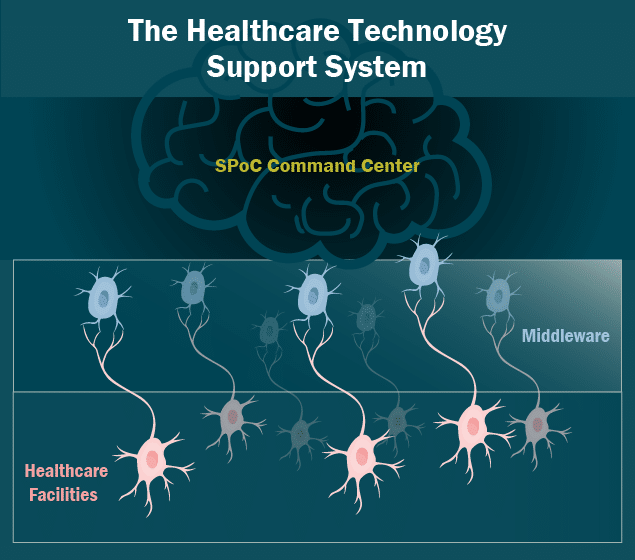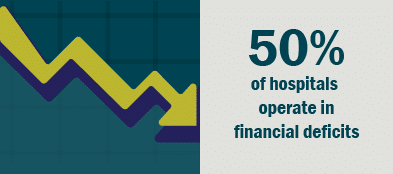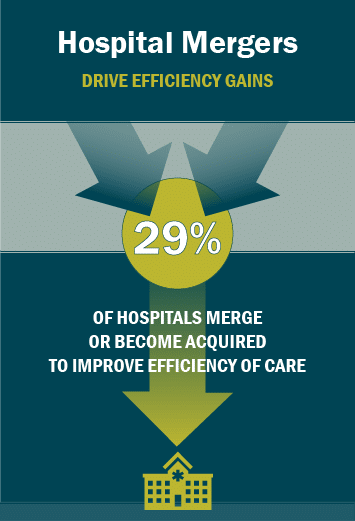Hospitals Centralize Technology Support, Improve Operational Efficiency
When healthcare systems are acquired, new management often focus investments on rebranding and the integration of electronic medical record (EMR) software. Left out from many modernization projects, however, are strategies to lower operating costs for other technology systems, ranging from building management and automation to security monitoring platforms.
A centralized technology system command center can lower costs, streamline operational oversight, and provide more-effective technology assistance across enterprise healthcare systems.
By merging technology-support departments into a single point-of-contact center, or SPoC, hospital staff can spend less time resolving technology issues and more time on tasks that improve patient care. A SPoC can identify system-level improvements that may further enhance care, while resulting in more satisfied patients and more-efficient use of hospital utility systems.
Better Technical Support
Within large healthcare systems, each hospital typically maintains its own facility-management, security program, and capacity-management software. Operationalizing different systems across the portfolio generally creates redundancies and inefficiencies. For example, internal IT support teams may exist for each hospital’s facilities, security, and clinical/biomed engineering departments.
A SPoC simplifies the troubleshooting process. Instead of each department turning to their own dedicated call center or developing their own service-request system, the SPoC provides technical support staff and service protocols for across the enterprise.
Support tiers for a SPoC may work as follows:
- Level 1: Staff from each support team receive training for basic resolution of service calls from all departments. Level 1 staff can resolve known usage problems or determine which requests should be escalated.
- Level 2: Experienced and knowledgeable technicians — either engineering staff within the facility or a dispatched third party — resolve more in-depth service requests.
- Level 3: Specialists with deep knowledge — often times, the engineers or programmers who designed and created the product or service in question — identify and resolve the root cause of the issue. The identified solution is documented, creating a knowledge base for future use by Level 1 and Level 2 personnel.

Smarter Data Analysis
The SPoC function goes beyond resolving technical problems. Centralizing data from across the enterprise, the SPoC can track hospital-by-hospital performance, using advanced analytics to make smarter financial, operational and security decisions.
Think of it like the healthcare system’s information-technology nervous system.

A SPoC command center acts as the brain of the hospital’s operations, receiving support messages and performance data from across the enterprise. Artificial intelligence and predictive analytics identify trends within large volumes of data. Media walls may display relevant information from the supported systems.
At the facility level, the software that supports and tracks department-level building management systems, security equipment, and clinical devices each serve as the nerve cells, passing signals toward the command center.
SPoC staff will need to understand how to interpret a diverse range of system alerts and events. Making sense of it all is software known as middleware. Acting like synapses, middleware translates each disparate software’s uniquely coded messages, enabling the SPoC to respond to service requests and to understand each department’s performance data.
Middleware links data from multiple sources, regardless of application, database platform, or system manufacturer. Hospitals, laboratories, and medical institutes regularly use middleware to improve EMR interoperability and to streamline clinical workflows. Similarly, middleware can be used to better track facility operations, to centralize alert and event management, and to respond to service requests.
More Productive, Comfortable, Secure Hospitals
Centralizing technology support and data-tracking systems can enhance staff productivity, expedite resolutions during equipment downtime, improve facility performance, and lower operational costs.
The move toward SPoCs is primarily driven by the benefit of avoiding costs such as redundant help desks, unnecessarily large volume of support calls, and long system repair times. Efficient use of the SPoC team can lead to improvements in key performance indicators or service level agreements across the enterprise.
SPoCs can minimize the amount of time that hospital employees spend talking to support, improving their overall productivity. Centralizing help desks can clarify who to contact for support, especially for employees who regularly travel between hospitals or departments. When not operating in silos, service technicians may take less time to resolve issues or may provide more consistent information.

Source: KLAS Research
SPoCs can offer cybersecurity benefits. Antivirus and data protection services can be more effectively standardized across the enterprise. System patches and responses to distributed denial of service (DDoS) attacks can be implemented more quickly and effectively.
SPoCs can streamline analysis of building management systems, improving facility performance analysis and avoiding utility expenses. Banner Health, for example, implemented a data-driven initiative to consolidate technology, policies and procedures for hospitals operating across six states. New protocols led to preventative repairs and energy efficiency improvements that avoided maintenance expenses and lowered energy spending by almost $12 million per year.
Enhancing Technology Frameworks while Reducing Costs
Arguably, no other department is as successful implementing processes like IT. Frameworks such as Six Sigma and International Organization for Standardization (ISO) 20000 have enabled operational efficiency, forcing the creation of knowledge bases, flowcharts, and survey responses that have led to continuous improvements.
For other departments, technology solution frameworks are not necessarily within their areas of expertise.

Source: American Hospital Association
Facilities and clinical engineering departments perform well at addressing equipment system failures and mitigating risks through preventative maintenance. Building security departments are tasked with maintaining 24/7 safe operations. These three departments often do not have the luxury of sitting at a desk and documenting the steps to repair a technology failure or to conduct data analytics.
At a time of escalating costs for healthcare supplies, drugs and equipment, coupled with rising labor and facility expenses, many hospital systems continue to struggle with tight margins. More than half of U.S. hospitals now operate in financial deficits.
For healthcare systems looking to reduce expenses and to improve employee productivity, a SPoC makes operational sense. Add in the potential for patient benefits — by optimizing environment of care across an enterprise, healthcare systems can improve quality control, patient comfort, and hospital safety. As more healthcare systems transition their technology systems, the SPoC model may soon become the new standard of practice.



